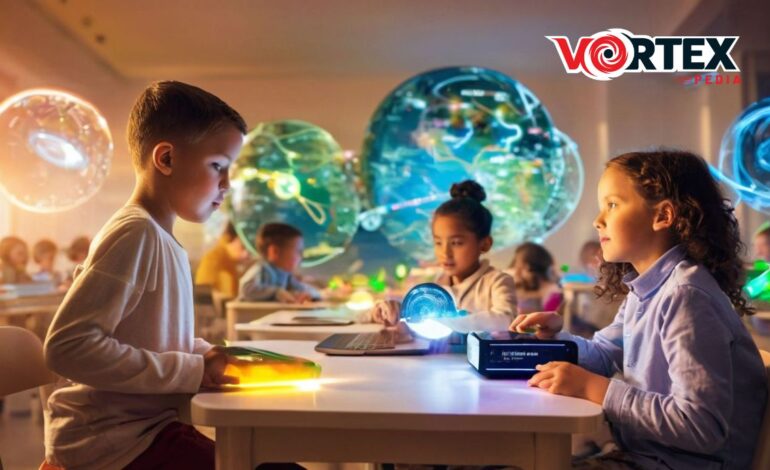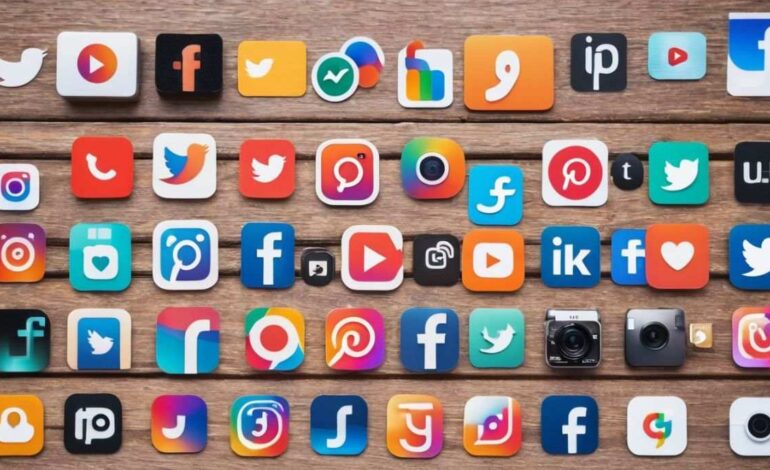
Innovations of 2025: A Guide to Teaching Kids About the Future
When it comes to 2025, the world is already changing at an unprecedented rate, and discoveries and inventions appear in science, technology, and other spheres of human life. The future is a large realm of opportunities and risks for the next generation, therefore it is crucial to inculcate future and future developments information to children. By exposing kids to such evolution, children are placed in a position of adaptability in a world where technology assumes a central role as well as helps them to develop curiosity and thinking abilities.
In this blog, we will review the primary breakthroughs of 2025 and offer recommendations for using them in educational activities with children.
Why It’s Important to Teach Kids About Future?
To start with, something like educating children about the future must not be understood in a vacuum without comparing it with current innovative practices. Children of the future will have a different world to live in than the present generation live in today’s world. By exposing kids to current and upcoming innovations, we help them:
Develop problem-solving skills: New technologies improve thinking and problem solving especially since appreciation of the same facilitates creativity.
Prepare for future careers: It is expected that many of the present-day occupations are not even imaginable twenty years ago and the latter will occur in the future. To teach children about those innovations, will build their ability to work and get a job in their future careers.
Encourage curiosity and learning: Children who embrace technology understand the need to learn more about the world around them and learn continually.
Now, it’s time to know some of the most exciting innovations of the year 2025.
Key Innovations of 2025
1. Artificial Intelligence (AI) and Machine Learning
It is predicted that by 2025 artificial intelligence and machine learning will be integrated into nearly all realms such as health, learning, traffic, and fun. AI will be making decisions as well as processing large amounts of data more than before making industries change.
How to Teach Kids About AI
Use Simple Examples: Explain that AI is already present in their lives through devices like Siri or Alexa.
Interactive Games: Explain coding games or AI apps and programs that the children can engage in so that they can learn basic machine learning.
Creative Projects: Pave the way for kids to build their own basic machine learning models using Scratch or any other similar learning interface.
2. Autonomous Vehicles
Automated transportation and self-driving vehicles are poised to revolutionize the way of transport. While by 2025 further improvements of autonomous vehicle technology will provide better and safer solutions for transporting goods and people.
Teaching kids about self-driving cars
Explain the Basics: Explain how the software and sensors can help vehicles drive on the roads without human interaction.
Field Trips and Videos: Go to areas where self-driving cars are being tested or see videos on how they actually operate.
Hands-On Learning: Teach students to make decisions like self-driving cars, using toy cars with parts that are programmable.
3. Sustainable Energy and Green Technology
Indeed, as the world develops ways of combating climate change, the development of sustainable energy will remain vital. Solar energy, energy from wind, and electric cars will be even more prominent by 2025, and new technologies create new methods of storing and using energy.
In this article, we shall describe how to teach kids about sustainable energy.
Solar-Powered Toys: Using solar power as a fun activity, teach the students how one of the gadgets or toys they have operates with electricity from the sun.
Home Projects: Try to design small home activities like constructing a wind turbine or solar oven.
Eco-Friendly Practices: Make energy conservation and recycling fun for kids as well as learn how they too can help make a change for the better.
4. Quantum Computing
Technologies such as quantum computing, the future of speedy problem-solving are expected to experience remarkable advancement by 2025. With the application phase just starting, quantum computing has the promise to disrupt areas such as cryptography, materials, and artificial intelligence.
Children Learning about Quantum Computing
Start Simple: It is important to explain that quantum computers are significantly more effective than current computers due to the fact that they are based on quantum bits (qubits).
Fun Comparisons: When do we compare the quantum computer with a regular computer: If one thinks of a quantum computer as a super-fast sports car then a regular one would be a bicycle.
Interactive Platforms: Help kids learn basic quantum computing ideas using quantum toys and games through popular quantum computing platforms for kids like Qiskit.
5. Virtual and Augmented Reality (VR/AR)
From the perspective of the future, virtual reality (VR) and augmented reality (AR) are going to transform how we teach, play, or engage. This is particularly due to the increased use of Virtual Reality and Augmented Reality by 2025 in the education, healthcare, and entertainment industries.
How to Teach Kids About VR and AR
Interactive Experiences: Let children use VR and AR as an entertainment medium and a tool through educational applications that make the content more engaging.
Create AR Projects: Introduce your child to applications in which they can create their own augmented reality projects including drawing on paper and seeing the picture come to life as a 3D model.
Learning by Doing: Discover fun field trips that a child could never experience in a lifetime but will get to do virtually in his or her bedroom.
6. 3D Printing
With the help of 3D printing, it is possible to manufacture something from a toy to ha ome. In the next five years, the technology will experience a scaling down in price and grow in popularity, as well as functioning in medicine, manufacturing, fashion industries, and more.
How to Teach Kids about 3D Printing
Hands-On Fun: It is recommended to create 3D art fit for kids using kid-friendly 3D printing pens or printers, where kids may design their own toys, jewelry, or small tools.
Explain the Impact: Explain how 3D printing could develop a simple medical device, assemble a house, or contribute to space exploration.
Explore Online Communities: Join forums that are associated with 3D printing for children so that they can congregate their ideas and designs.
7. Robotics
The field of robotics will expand when again up to 2025 and robots will gradually become significant in healthcare, manufacturing, and even in everyday lives. From securing personal assistants to performing robotic surgeries, these machines are simply making humans sophisticated.
Teaching kids about robotics.
Robotics Kits: It will further involve making kids familiar with robotics by using kits for children of different ages so that they can assemble and program their own robots.
Real-World Examples: Sometimes, bring clips of the classroom or go to places where robots are being employed, for example, factories or health facilities.
Coding Basics: Introduce problem-solving with coding concepts and use kid-friendly programming languages that also involve a form of robotics such as LEGO Mindstorms.
How Parents and Teachers Can Support Learning About Innovations
1. Encourage Curiosity
Help your children develop an inquiry-based attitude to the processes that happen around them. For any new technology they encounter or any new innovation they come across, help them to learn how the technology in question operates and why it is important.
2. Incorporate STEM Learning
To achieve this students should have STEM programs embedded in everyday learning so that children understand the basics of implementing knowledge. Toys, games, and after-school care programs particularly in STEM can help create awareness in these fields.
3. Stay Informed
The parents and teachers should be abreast with the latest innovations themselves. It enables you to enlighten the young ones with the concepts and the present information since the examples you give them are up to date.
4. Make Learning Fun
The human mind is capable of absorbing only what it enjoys and appreciates. Engage the audience with fun gameplay, quizzes, and other experiments and make learning about future inventions entertaining. It is always fun to laugh, joke, and learn with your hands; especially when doing VR adventure, constructing a robot, or 3D printing a model.
Conclusion
Because the innovations of 2025 are already set into our future they are going to impact our future in ways that are not easily foreseeable from our current timeframe. However, by educating the young generation about all these innovations, we are able to prepare them for the world and have them become future generational thinkers. No matter, if it is AI green energy or robots, familiarizing children with what is yet to come, will help them embrace what can be ahead.
As such, parents and educators must encourage curiosity, integrate STEM into a child’s learning process, and make learning adventurous all geared at preparing a child for the future and all the technological advancement that comes with it.








